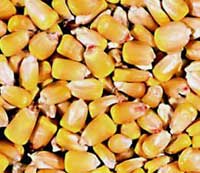For more than 150 years, people around the world have made ample use of the explosive trinitrotoluene, otherwise known as TNT. Its use has had unintended consequences, however: the manufacture, storage and disposal of TNT—which ranks among the most toxic explosives employed by the military—have left large areas of land contaminated and polluted. So far, effective and affordable cleanup technologies have remained out of reach. But new research suggests that help may come from what might seem an unlike

Radon may pose a greater cancer threat than has been thought.
Radon damage from irradiated cells spreads to their neighbours, a new study finds 1 . The result suggests that small amounts of this radioactive gas could cause widespread harm.
The study “is a reason for concern but not panic”, says Gerhard Randers-Pehrson of Columbia University, New York, a member of the team that performed the study. “We’re talking about the acceptable level of radon changing pe
Generally speaking, we go to great lengths to rid our bodies of foreign bacteria, whether it’s by brushing our teeth, washing our hands or taking antibiotics. But new research suggests that when it comes to treating tumors, we may one day invite the bugs in. According to a study published yesterday in the early online edition of the Proceedings of the National Academy of Sciences, a bacterium that normally resides in soil, dust and dead flesh quickly destroys large tumors in mice when injected along

In news that will surely fan the flames of the heated debate over genetically modified crops, scientists have found evidence that genes from GM plants can spread far and wide to native ones. According to a report published today in the journal Nature, wild corn from the remote mountains of Oaxaca, Mexico contains transgenic DNA. This, the researchers note, bolsters concerns that such unintentional contamination can threaten the genetic diversity of natural crops.
DNA analyses of the Oaxaca
The size and types of the largest local land animals vary greatly from place to place, prompting scientists to question what controls the success of animals of certain sizes over others. Now a report published in the current issue of the Proceedings of the National Academy of Sciences shows that the size of a landmass limits the maximal body size of its top animal.
Gary Burness and Jared Diamond of the University of California School of Medicine, together with Timothy Flannery of the South

It’s official: English football teams score fewer goals.
Soccer teams worldwide are scoring more goals than they ought to be, whereas English teams seem to follow statistical expectations. The news may delight fans outside England, but it is puzzling the physicists who have found that the chance of a high-scoring game is significantly greater than it may first appear 1 .
John Greenhough and colleagues at Warwick University in Coventry, England, analysed the s